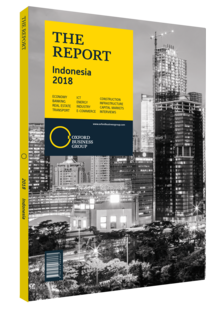William Sabandar, President Director, Mass Rapid Transit (MRT) Jakarta: Interview

Interview: William Sabandar
How can land acquisition issues be solved in the next phases of the MRT project’s development?
WILLIAM SABANDAR: When the first phase of the MRT project started much of the land had not yet been cleared. This has hampered the development of the project, as you can’t construct if the land is not cleared, especially in elevated sections. To mitigate this problem for the second phase of the project, we will coordinate with all the ministries and local authorities to start the land acquisition during the basic engineering design process. When we break ground in 2018 we need to make sure that the land is cleared, or the whole project could be delayed, affecting cost efficiency. We need to work very closely with the city and the provincial government to allocate a budget for land clearance and have a clear plan for the feasibility study. Starting the land acquisition as early as possible is the right recipe for ensuring that it doesn’t become a problem later in the project, and it is something that can easily be done with effective communication. People in areas in which the MRT project will be constructed need to understand that, although they will suffer from more traffic jams during the construction works, they will be the ones enjoying better transport, land value increases and new economic opportunities once it is completed.
What are the expectations for the MRT project in reducing traffic congestion?
SABANDAR: The first line of the MRT project is to become a model for modern public transportation in Jakarta. The project will be integrated with other public transport systems, such as TransJakarta and the rail network. We will extend pedestrian spaces along some of the main avenues, such as Sudirman and Thamrin, which are among the most congested and central areas in Jakarta. There will be a pedestrian entrance and bicycle facilities for the MRT project, and electronic road pricing will also be introduced. Any private cars coming to Sudirman and Thamrin will face higher parking fees, which incentivises public transport use. From the 175,000 people that we expect to use the MRT system every day, I predict 100,000 will come from people formerly using private cars, meaning 50,000 less cars on the road per day, which is very significant for the reduction of traffic in that area. To address the problem of traffic you need public transport integration – MRT, light rail transit, TransJakarta buses, trains and feeder systems – which will help to reduce traffic congestion in Jakarta. This will happen if we can finish by 2025, but the policymaking needs to be very strong. We need to strengthen coordination in terms of bureaucracy and transport policy. There needs to be a coordination mechanism at all levels, between the central, provincial and local governments, and Parliament, which could align them in support of public transport. If not, policymaking will face great obstacles.
What multiplying effect will the MRT project have on the surrounding areas it is set to reach?
SABANDAR: Initially, advertisement, retail in and around the stations, and telecommunication systems will benefit. We are also encouraging interconnection between businesses and buildings. We need to promote the areas around the stations to add more value and create economic opportunities.
For construction, we are considering utilising public-private partnerships. This is not just a transport project, but an urban development project to create a more vibrant city. With a total of $1.5bn of investment, the multiplying effect will create economic opportunities around the station, and more residential buildings can be built around the station area. This will increase passenger numbers and add more economic value, which means more shops and offices can be developed. Ultimately, the government will further benefit from increased tax revenues.
You have reached the limit of premium articles you can view for free.
Choose from the options below to purchase print or digital editions of our Reports. You can also purchase a website subscription giving you unlimited access to all of our Reports online for 12 months.
If you have already purchased this Report or have a website subscription, please login to continue.

